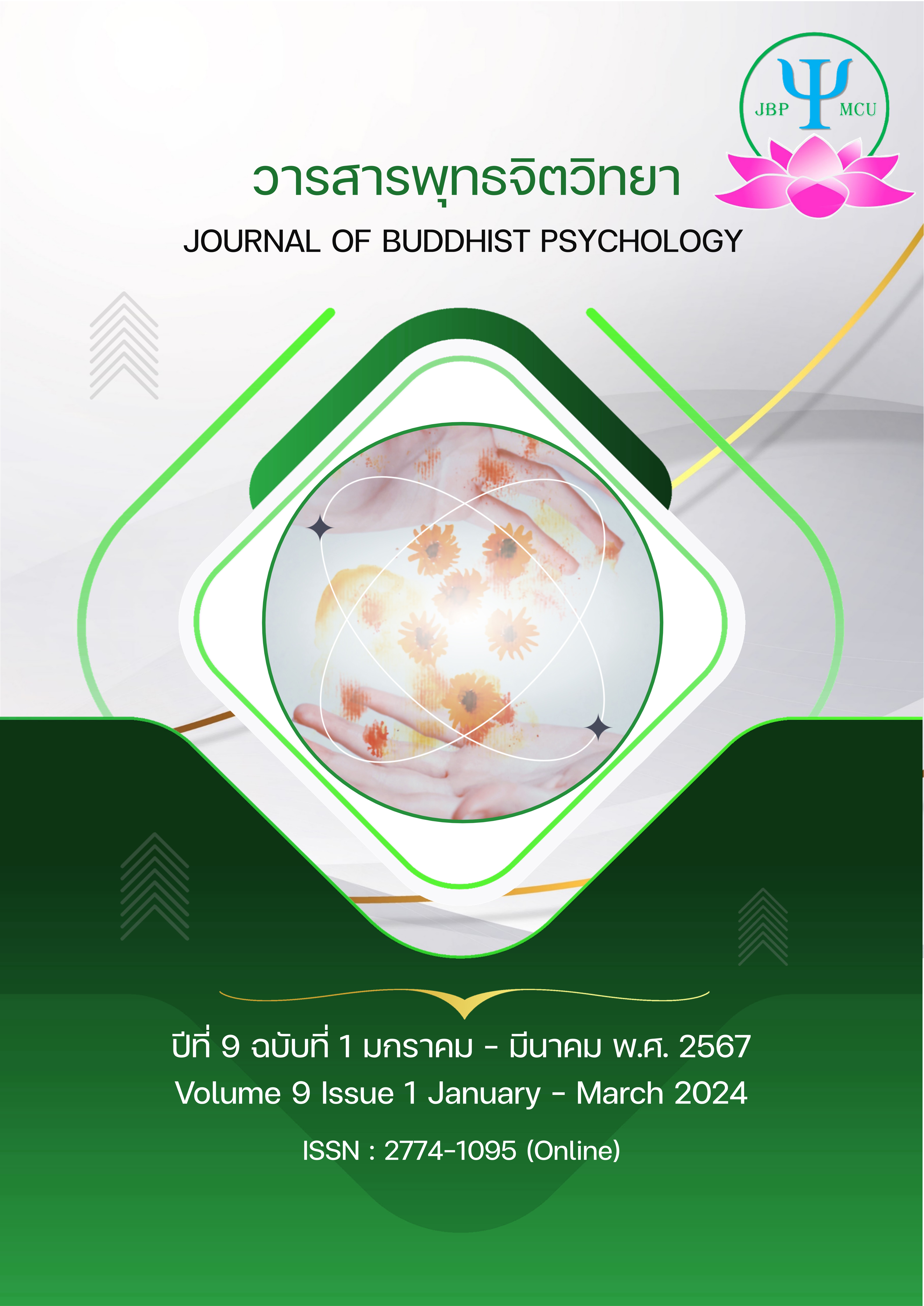A Study of the Effective English Teaching Strategies for the Multicultural Classroom at Mahachulalornkornrajavidyalaya University, Chiang Mai Campus
Main Article Content
บทคัดย่อ
The objectives of the research aim 1) to study the effective English teaching strategies in using for the multicultural classroom, 2) to explore the Attitudes and Perceptions of different cultural students in the multicultural classroom at Mahachulalornkornrajavidyalaya University, Chiang Mai campus, and 3) to propose the guideline for the effective English teaching strategies in using for the multicultural classroom at Mahachulalornkornrajavidyalaya University, Chiang Mai campus. This research employed the mixed method, the Quantitative and the Qualitative research. For the quantitative, the sampling groups were forty-seven 4th-year B.A. students in the Faculty of Humanities of Mahachulalongkornrajavidyalaya University, Chiang Mai Campus, including monks, novices, and laypersons. The research instrument was a five-level scale questionnaire. The results of study the of effective English teaching strategies for multicultural classrooms, including the effective English teaching strategies, Attitudes, and Perceptions were high rates. In the qualitative research, in-depth interviews were conducted by interviewing the key informants by recording the sound and transcript into the passage. In addition, nine key informants who are the lecturers of the Faculty of Humanities were interviewed. The results of the in-depth interview indicated that effective English teaching strategies for multicultural classrooms must be included, supporting students in participation, teachers being the facilitators, and adjusting pedagogies along with students’ level. In the case of attitude, teachers in the multicultural classroom must be; loving-kindness, treat students equally, and be curious about students’ lifestyles. The terms of perceptions of teachers in the multicultural classroom were; realization of language (mother tongue), seeking of student’s history, and acknowledging educational background. Additionally, the appropriate guidelines for effective English teaching strategies for the multicultural classroom proposed that teachers must integrate any activities and exercises to form cultural acceptance, and learn from each other teachers must play the role of facilitator.
Article Details

อนุญาตภายใต้เงื่อนไข Creative Commons Attribution-NonCommercial-NoDerivatives 4.0 International License.
เอกสารอ้างอิง
Alismail, H. A. (2016). Multicultural Education: Teachers’ Perceptions and Preparation. Journal of Education and Practice, Vol. 7(11), 53.
Banks, J.A. (2014). An Introduction to Multicultural Education. Fifth edition, Seattle: University of Washington Press.
Brooks, J. G., & Brooks, M. G. (1999). In search of understanding: The case for constructivist classrooms. Virginia: Association for Supervision and Curriculum Development, Alexandria.
Chouari, A. (2016). Cultural diversity and the challenges of teaching multicultural classes in the twenty-first century. Arab World English Journal (AWEJ), 7(3), 3-17.
Crystal, D. (2003). English as a global language. Cambridge shire: Cambridge University Press.
Fayombo, G. A. (2012). Active Learning Strategies and Student Learning Outcomes Among Some University Students in Barbados. Journal of Educational and Social Research, 2 (9), 79-89.
Hermaniar, Y., & Palupi, T. W. (2019). Teacher’s role in handling multicultural classroom; overview on teaching strategies and media. ELT Echo: The Journal of English Language Teaching in Foreign Language Context, 4(1), 35.
Honebein, P. C. (1996). Seven goals for the design of constructivist learning environments. New Jersey: Englewood Cliffs.
Jankova A., N. (2018). Teaching English in a multicultural classroom. Knowledge-International Journal, Scientific Papers, 26(2), 612.
Karacabey, M. F., Ozdere, M., & Bozkus, K. (2019). The attitudes of teachers towards multicultural education. European Journal of Educational Research, 8(1), 383-393.
Kustati, M., Yusuf, Y. Q., Hallen, H., Al-Azmi, H., & Sermal, S. (2020). EFL Teachers' Attitudes towards Language Learners: A Case of Multicultural Classrooms. International Journal of Instruction, 13(1), 370.
Laal, M., & Laal, M. (2012). Collaborative learning: what is it? Procedia-Social and Behavioral Sciences, 31, 491-495.
Lee, J. (2020). Research on SMART LEARNING MODEL Based on 5 Steps Using Media-Based Teaching and Learning Method. Public Value, 5(2),1-12.
Mesquita, I., Coutinho, P., De Martin-Silva, L., Parente, B., Faria, M., & Afonso, J. (2015). The value of indirect teaching strategies in enhancing student-coaches’ learning engagement. Journal of sports science & medicine, 14(3), 657.
Mili, & Towers, E. (2022). How postgraduate university students construct their identity as learners in a multicultural classroom. Teaching in Higher Education, 27(12), 17.
Prince M. (2004). Does Active Learning Work? A Review of the Research, Journal of Engineering Education, 93(3), 223-231.
Reaungsri S., Leepreecha P. (2020). Multicultural Education and The New Generation of Teachers. Panyapiwat Journal, 12(1), 234.
Saban, G. A. S. (2013). Learning Needs in the Multicultural Classroom: Implications to Equitable Teaching. Asia-Pacific International University, 8(1), 1-9.
Shi, H. (2017). Learning strategies and classification in education. Institute for Learning Styles Journal, Vol. 1(1), 24-36.
Sriwisan, S. (2021). Develop a Fostering Multicultural Competence through Literary Circles for Undergraduate Students. Journal of Modern Learning Development, Vol. 6(2), 197.
Subrayan, A., Thevarajoo, T., & Ahmad Buhari, T. (2020). The usage of direct and indirect learning strategies fostering interactions in group discussions. Journal of Creative Practices in Language Learning and Teaching (CPLT), 8(1), 15-30.
Yabarmase, D. (2013). The fishbowl strategy: An effective way to improve students' speaking ability. Indonesian JELT: Indonesian Journal of English Language Teaching, Vol. 9(2), 137-145.
Yildirim S, Tezci E. (2016). Teachers' Attitudes, Beliefs and Self-Efficacy about Multicultural Education: A Scale Development. Universal Journal of Educational Research, Vol. 4(12A), 196–204.


